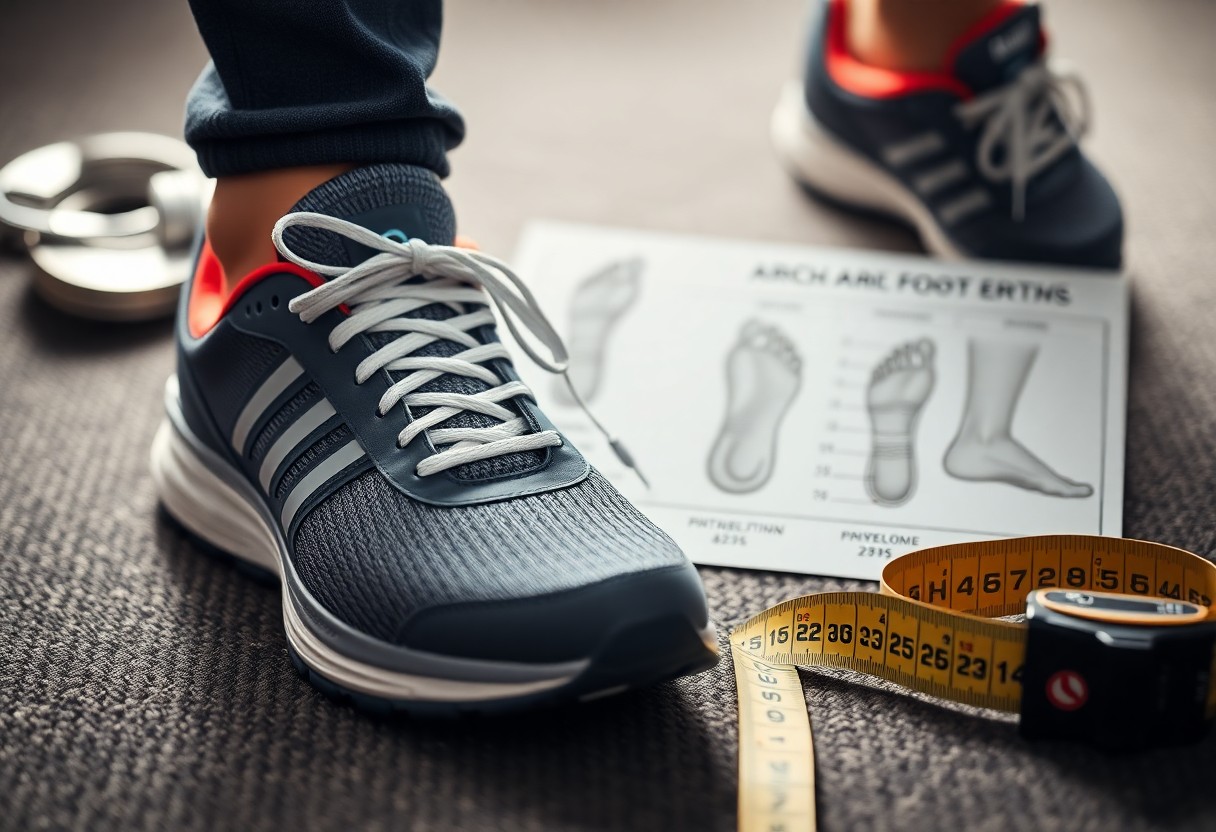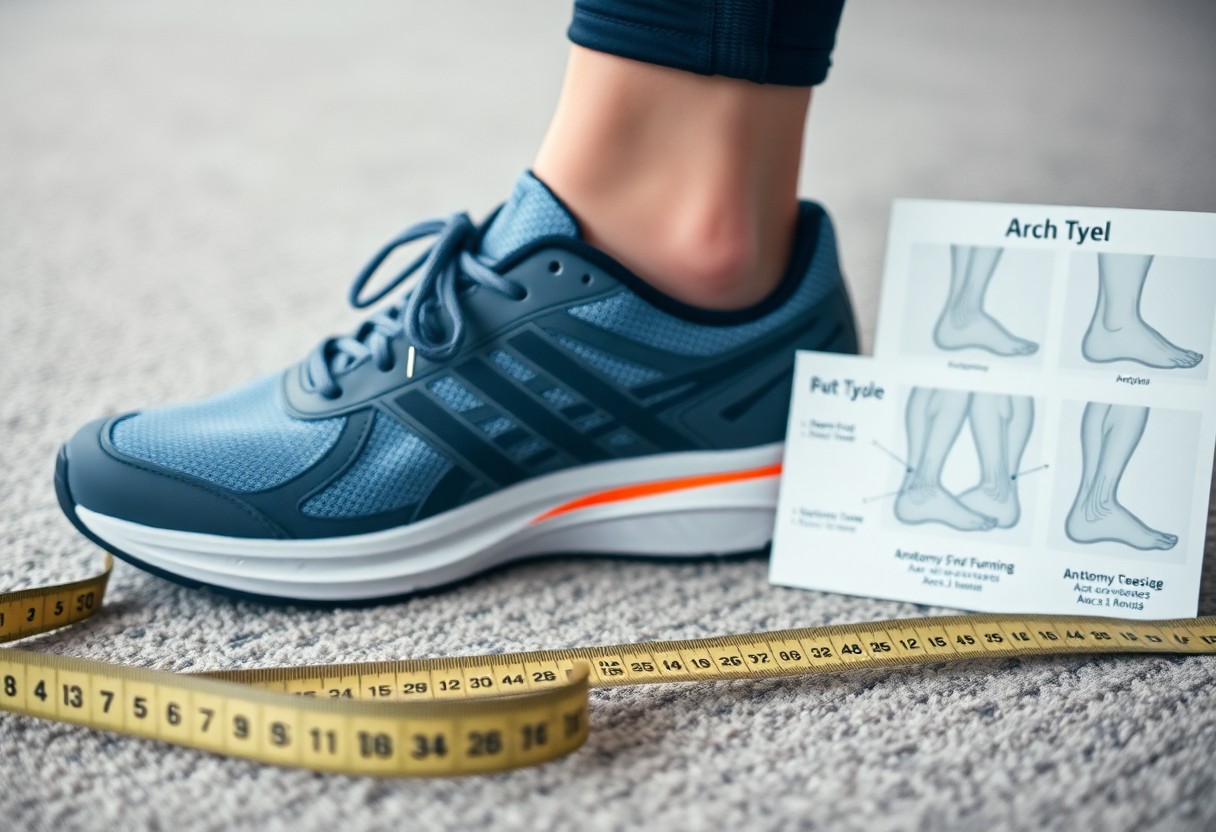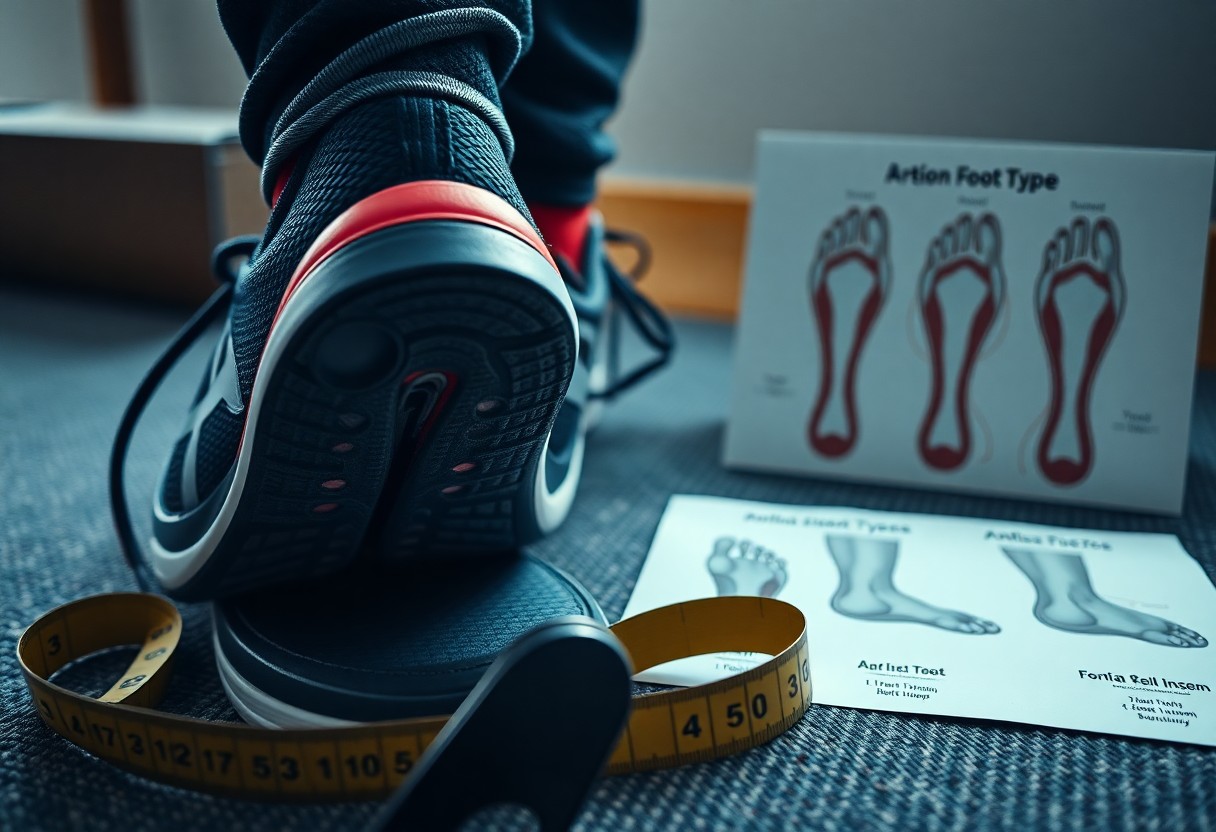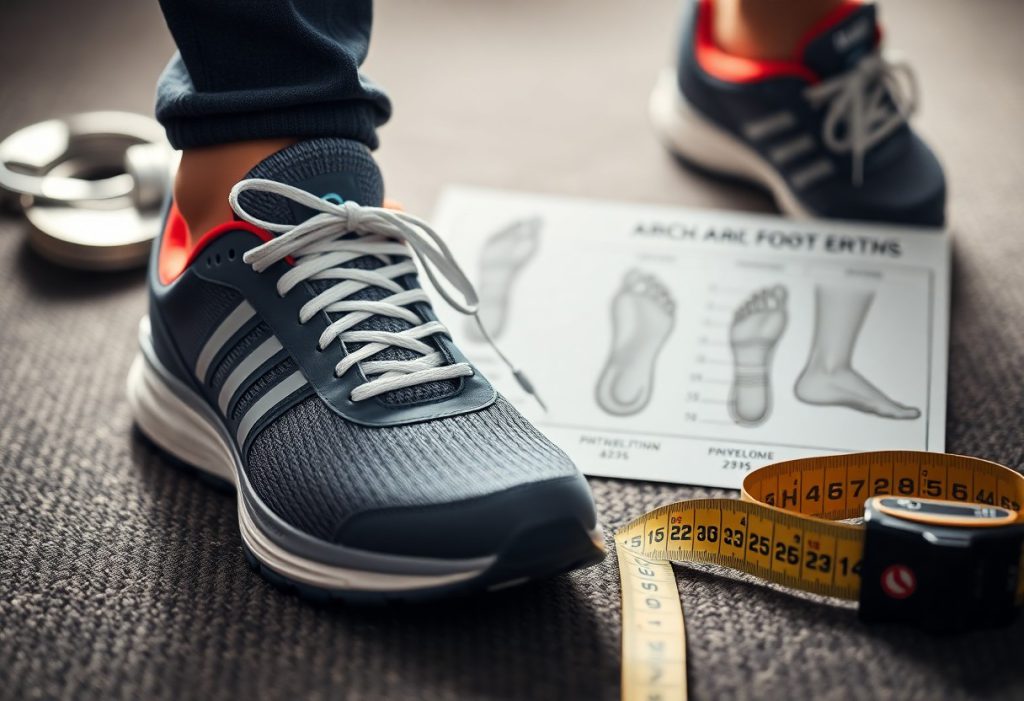Supporting your feet effectively goes beyond simply incorporating arch support into your footwear. It may surprise many to learn that most people do not actually need arch support in their shoes. Research indicates that avoiding arch support can actually strengthen your foot muscles. Over time, relying on artificial supports may lead to muscle atrophy. The human foot is naturally designed with arches that flex and adapt to different surfaces, and restricting this natural movement with rigid supports could negatively impact your foot health in the long run. This detailed article aims to shed light on the science of arch support, empowering you to make well-informed choices regarding your foot health.

Unpacking the History and Development of Arch Support in Footwear
The natural support system of your feet has played a crucial role in the design of footwear throughout history. The concept of arch support gained momentum in the 1920s when Dr. William Scholl introduced commercial orthotics to the market. Before this innovation, people relied on their feet’s inherent strength and flexibility. Understanding this historical context reveals how our perceptions of foot health and footwear have evolved significantly over time.
How Traditional Footwear Practices Have Changed Over Time
The transformation of footwear practices shows that ancient societies predominantly used simple, flat sandals or often went barefoot. Such habits encouraged natural foot development and strength. Our ancestors had strong and flexible feet, thriving without artificial supports, as evidenced by studies on indigenous populations that continue to practice traditional footwear methods. This historical perspective highlights the essential role of natural foot mechanics in preserving foot health.
Assessing Modern Standards in Footwear Design
By the mid-20th century, particularly in the 1950s, shoe manufacturers began to integrate built-in arch support as a standard element in shoes. Today, most contemporary footwear includes structured arch support, a feature that has become commonplace despite limited scientific evidence supporting its universal need. This trend reflects changing consumer expectations and industry norms, but it also raises critical questions about the potential implications of such designs on foot health.
Currently, arch support is so ubiquitous that 70% of modern shoes come equipped with this feature. However, studies published in the Journal of Foot and Ankle Research indicate that excessive reliance on arch support may contribute to muscle weakness in the feet. As a result, many podiatrists now recommend engaging in periodic barefoot walking and utilizing minimally supportive shoes to maintain natural foot strength.

Grasping the Complexity of Foot Architecture and Function
The human foot comprises 26 bones, 33 joints, and over 100 muscles, functioning most efficiently when permitted to move freely. The foot’s arch operates as a self-supporting structure that gains strength through regular use, while reliance on artificial support can weaken it. Research shows that 75% of individuals wearing conventional shoes with arch support exhibit reduced foot muscle activity, which can ultimately result in diminished natural foot strength over time.
Understanding the Marvel of Natural Foot Mechanics
Your foot’s design is a remarkable feat of engineering, showcasing a complex system of self-support. Walking barefoot or in minimalist shoes allows for optimal movement, enabling your arches to flex and strengthen naturally. Studies indicate that individuals who frequently walk barefoot or choose minimal shoes develop stronger foot muscles and more stable arches compared to those who rely on supportive footwear. This reinforces the significance of natural movement for maintaining foot health.
Optimizing Muscle Function and Development Through Natural Movement
Disrupting your foot’s natural movement can impede its development. Your foot muscles need regular engagement through natural activities to maintain their strength. Research published in Nature suggests that wearing shoes without arch support contributes to the development of stronger intrinsic foot muscles. This connection underscores the importance of natural movement in achieving optimal foot health.
Additionally, it is crucial to consider the effects of wearing shoes with built-in arch support. Such footwear can lead to decreased muscle engagement, resulting in potential weakness over time. Studies have shown that transitioning to minimal footwear can boost foot muscle strength by up to 60% within eight weeks. However, it is essential to approach this transition with caution, particularly if you have existing foot conditions to prevent injury.
Diving Deeper into Research and Findings on Foot Health
If you’re eager to understand the scientific principles underlying arch support, numerous studies demonstrate that your feet can strengthen without artificial support. Various investigations reveal that natural foot movement enhances muscle development and improves arch stability, emphasizing the critical role of biomechanics in foot health.
Highlighting Significant Scientific Research on Arch Support
Among the most notable findings, a study featured in Nature illustrates that people who wear minimal footwear develop foot muscles that are 50% stronger than those who wear traditional supportive shoes. This evidence reinforces the idea that regular movement and exercise enable your feet to sustain their arches naturally.
Comparative Study of Footwear Choices and Their Impact on Different Populations
Contrasting Users of Traditional vs. Minimal Footwear
| Traditional Shoe Users | Minimal Shoe Users |
| Exhibit higher rates of flat feet | Demonstrate superior arch strength |
| Show weaker foot muscles | Exhibit stronger foot muscles |
A thorough analysis across various populations reveals significant differences in foot health. Your foot structure can adapt significantly based on the types of shoes you wear.
Insights from Global Population Studies
| Developed Countries | Barefoot Communities |
| 20% flat foot occurrence | 3% flat foot occurrence |
| Higher reliance on arch support | Natural arch strength |

Challenging Common Beliefs: The Support Paradox in Footwear
Challenging conventional wisdom, overdependence on arch support in shoes can undermine your feet’s natural strength. The human foot is intricately designed with a comprehensive system of muscles, tendons, and ligaments that work together to provide natural support. When artificial arch support assumes this role, foot muscles may become underutilized, leading to gradual weakening.
Understanding the Cycle of Dependency on Arch Support
Consistent use of arch support creates a harmful cycle. Feet can develop a reliance on external support, leading to muscle atrophy. Research indicates that 70% of individuals who regularly use arch support report increased discomfort when walking without their supportive shoes, underscoring the emergence of this dependency.
Investigating the Link Between Muscle Weakness and Arch Support
Wearing shoes with built-in arch support could weaken your intrinsic foot muscles by as much as 50%, according to findings in Nature. This weakening compromises your feet’s natural arch support system, potentially leading to issues such as flat feet and other complications. Moreover, it’s important to recognize that this muscle weakness can extend beyond your feet, as weak foot muscles can negatively affect your overall posture and balance. Studies indicate that individuals transitioning to minimal footwear often experience a 60% increase in foot muscle strength within six months.
Exploring Natural Alternatives for Enhanced Foot Health
For those interested in moving away from traditional arch support, several natural approaches can enhance foot strength. These methods focus on allowing your feet to function as intended, promoting the development of stronger foot muscles and more stable arches through natural movement.
Adopting Minimalist Footwear for Enhanced Natural Movement
Minimalist shoes, featuring zero drop soles, wide toe boxes, and flexible materials, encourage natural foot movement. These designs facilitate unhindered motion, helping to maintain proper foot mechanics and fostering natural arch strength. Research shows that regular use of minimal footwear can boost foot muscle strength by up to 60% through everyday activities.
Effective Strategies for Safely Transitioning to Minimal Footwear
When considering a shift to minimalist footwear, it is essential to adopt a careful and gradual approach to ensure your safety and comfort. Begin by wearing minimal shoes for short durations, gradually increasing the time spent in them over several weeks. This method helps prevent overuse injuries as your feet adjust to their newfound freedom, facilitating a smoother transition.
A successful transition should ideally include specific foot strengthening exercises. Start with 10-15 minutes per day in minimal shoes, gradually adding 5-10 minutes each week. Incorporate exercises like toe spreads and brief barefoot walks on safe surfaces. This incremental strategy allows you to reduce the risk of common transition injuries while effectively enhancing your natural arch strength.
Addressing Health Considerations for Optimal Foot Care
It is vital to acknowledge that foot health requires personalized care. While natural foot movement is advantageous for muscle strength, specific medical conditions may require tailored support. Factors such as your foot structure, activity level, and any existing conditions will determine your ideal footwear needs.
Recognizing When Arch Support Becomes Necessary
Contrary to popular belief, arch support is not universally necessary. However, individuals with acute injuries, severe flat feet, or specific medical conditions may benefit from temporary or permanent arch support. Research shows that only 10-20% of the population genuinely requires specialized arch support for medical reasons, emphasizing the importance of personalized evaluations.
Guidelines for Comprehensive Professional Foot Health Assessments
To ensure you make informed choices about your footwear, it is wise to consult a foot health professional. Comprehensive evaluations should include gait analysis, assessment of foot structure, and review of medical history. These factors are crucial in determining whether arch support is necessary or if transitioning to minimal footwear is a suitable option.
Support from a qualified expert can offer clarity and guidance in your foot health journey. A thorough assessment should encompass measuring arch flexibility, evaluating muscle strength, and analyzing walking patterns. Additionally, your healthcare provider should consider your daily activities and any previous foot injuries to create an effective treatment plan tailored to your individual needs.
Reflecting on the Impact of Footwear Choices on Foot Health
Your footwear choices play a significant role in your overall foot health. It’s crucial to recognize that arch support is not essential for most individuals and may, in fact, weaken foot muscles over time. Your feet possess inherent strength and flexibility, functioning optimally when allowed to operate as nature intended. If you are contemplating a transition to minimal footwear, beginning this process gradually will allow your feet to adapt effectively. The evidence strongly suggests that allowing your feet to function without artificial support can lead to stronger muscles and improved foot health for the vast majority. Always consider your unique needs and consult a foot health professional for specific concerns.
Common Questions and Answers About Arch Support
Do healthy feet require arch support in shoes?
Most healthy feet do not need arch support in shoes. Studies have shown that natural foot strength develops more effectively without artificial support. The muscles and arches of the foot perform best when allowed to function naturally. This is consistent with research on populations that frequently go barefoot or prefer minimal shoes, which show stronger foot muscles and fewer arch-related issues.
Can prolonged arch support usage weaken feet over time?
Yes, extended reliance on arch support can lead to weakened foot muscles. When artificial support begins to perform the role of foot muscles, these muscles become less engaged and gradually lose strength. This cycle of dependency can hinder overall foot health. Research published in Nature indicates that individuals who consistently wear conventional shoes with arch support often experience weaker foot muscles compared to those who choose minimal footwear.
Who may genuinely require arch support in their footwear?
Certain individuals with specific foot conditions, injuries, or medical issues may truly benefit from arch support. This includes people diagnosed with flat feet, specific foot injuries, or structural abnormalities. However, these situations should be assessed by a foot health professional who can devise an appropriate treatment plan. The goal should always be to restore natural foot function whenever possible, rather than relying on permanent support.
The Article Arch Support: Essential Facts About Shoe Necessities Was Found On https://limitsofstrategy.com


